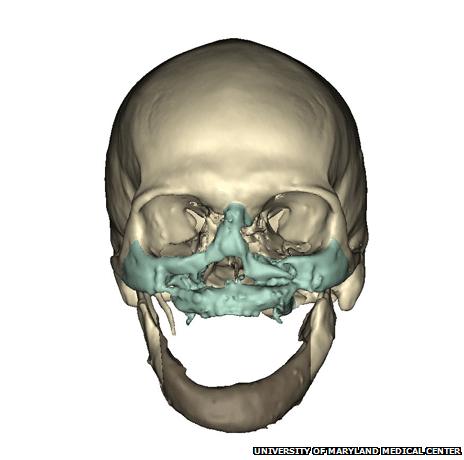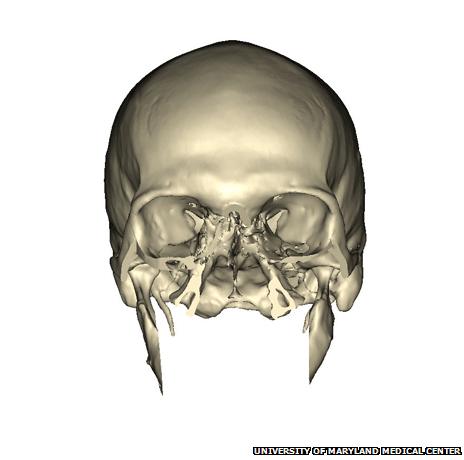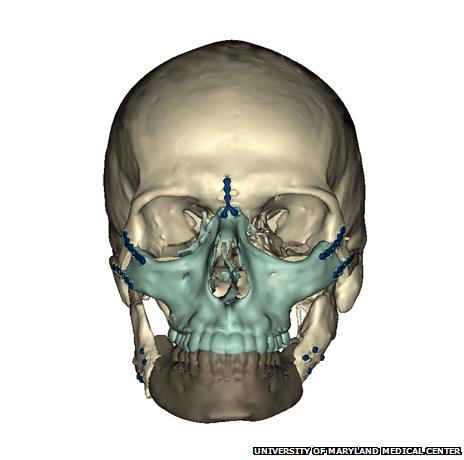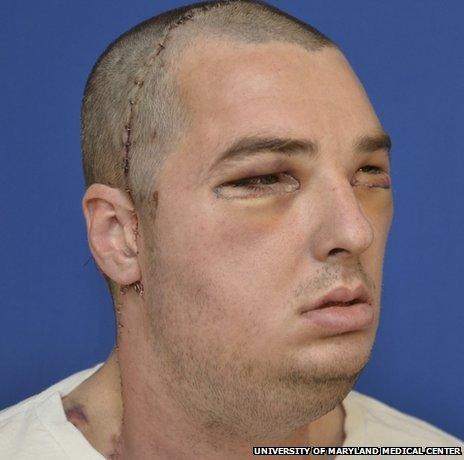US face transplant man 'recovering well' after surgery
- Published
A man who was given a face transplant after living for 15 years as a recluse is recovering well, US doctors say.
Richard Lee Norris is beginning to feel his face and is already brushing his teeth and shaving, according to the University of Maryland Medical Center.
Last week he was given what physicians say is the most extensive face transplant ever carried out, including new teeth, nose, tongue and jaw.
He has also regained his sense of smell, his doctors say.
The 37-year-old cut himself off from the rest of the world and wore a mask whenever he went outside after suffering horrific injuries in a gun accident.
The surgery was funded by the US Navy, which hopes the techniques will help casualties from Iraq and Afghanistan.
Surgeons who carried out the 36-hour operation said it was part of a series of transplant operations lasting 72 hours, using organs from one donor in five patients, including Mr Norris.
He lost his lips and nose in the accident, and only had limited movement of his mouth.
Lead surgeon Eduardo Rodriguez said Mr Norris would now get his life back.
"Our goal is to restore function as well as have aesthetically pleasing results," he said.
The US government estimates that 200 wounded troops might be eligible for face transplants.
The first face transplant was performed in France in 2005 on a woman who was mauled by her dog.
In 2010 surgeons in Spain carried out the world's first full-face transplant.
Face transplant surgery

Extensive face transplant surgery has transformed the face, and life, of Richard Norris, who lived as a recluse for 15 years after losing his nose, lips and teeth in a gun accident.

A CT scan shows the areas of Mr Norris's face damaged by the accident. He underwent a number of life-saving operations during which surgeons carried out some reconstructive surgery, but he still had limited movement of his mouth.

The first stage of the face transplant operation was to remove the damaged areas - including the skin over his forehead and the reconstructed nose and jaws which had been made from tissue using other parts of Mr Norris's body.

Surgeons, aided by computer modelling, then worked to transplant facial tissue, a portion of tongue, teeth and jaws from the donor. Underlying muscles and nerves which enable expression and sensation were also transplanted.

Mr Norris will have to take drugs for the rest of his life to stop his body rejecting the donated face. But a week after the operation, doctors say he is already shaving and brushing his teeth.
- Published25 November 2011
- Published26 July 2010